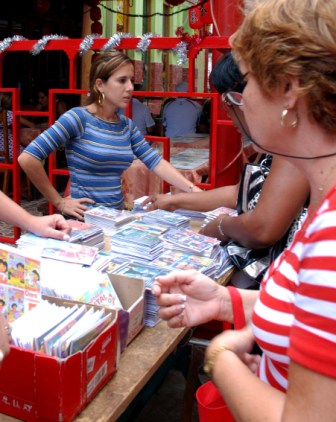100 Years of Working Women’s Day (I)
Esteban Diaz

March 8 for me is a day representing the value, discipline, courage and determination of working women, not the false bourgeois values depicted by almost all the broadcast media, blurring that day’s distinctly socialist and revolutionary origin.
I will try to communicate the origins of this day, since a society that erases its history loses the conducting thread for its development.
From what I have read, the proposal to establish international working woman’s day came from delegates of the Socialist Party of the United States, which had already celebrated the first Women’s Day in Chicago in 1908.
For the following year this same political party called for demonstrations at the national level on the last Sunday of February. The purpose was to press for the emancipation of women in the joint struggle with all who are exploited, to win women’s right to vote and to abolish sexual slavery.
In this way, the movement of working women for social revolution became increasingly unified, as evidenced by “The insurrection of the 20,000,” which took place in 1910 when demonstrations of more than 10,000 female workers shook New York. They were supporting the Triangle textile mill strike – a struggle then underway for two months.
Despite the repression, the unity of the workers from different factories strengthened the pickets, allowing for a partial strike victory on February 15. Certainly this was a heavy blow to capital.
The company would seek vengeance one year later, on March 24, 1911, when a fire broke out in the factory. Without there being emergency exits, firemen coming to the rescue met with doors that were padlocked and barred. One hundred and forty-six workers died, mostly Jewish and Italian immigrants. Hundreds of thousands attended the funeral march, and it’s said there was a long and painful thunder of voices, an expression of the greatest of human loss.
It is often said that March 8 was voted upon as working women’s day in Copenhagen in homage to the workers of the Cotton factory, who died in a fire caused by the boss in 1857. This information is erroneous: the second Conference of Socialist Women (Copenhagen, 1910) voted on an annual day of struggle for woman’s emancipation but left open the day for its celebration in each country. All these struggles contributed to greater experience, which is reflected in the increase in the number of civil insurrections made up of women.
More recently, in 1921 in Moscow, the first Conference of Communist Women came together on March 8 in honor of the San Petersburg workers, who on February 23 (March 8 in the western calendar) declared a strike against some textile factories and sent delegates of metalworkers requesting they support the movement. This strike, against the war and hunger, was the beginning of the February Revolution and the end of czarism.
Capital has made an effort to transform this day into one of “women’s unity,” with features that are feminist, sexist and/or commercial at the same time. This is nothing more than an effort to maintain women’s alienating exploitation and promote the reconciliation of classes. This way, year after year, they falsify this day with the aim of weakening the struggle of those who are exploited, isolating them from the working class as a whole.
The international economic crisis will open up a period of revolutions that will include the majority of exploited women, along with the rest of the proletariat. Women, who are doubly exploited, will come out to take the factories and the streets to again point out the path for us to follow.





